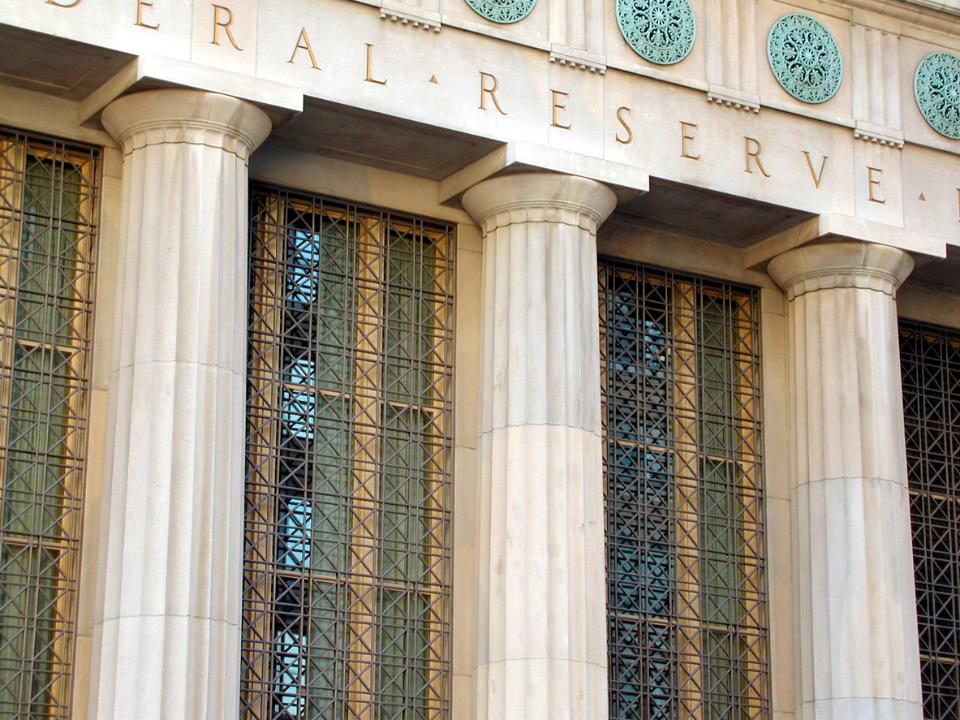Federal Reserve raises rates, plans to reduce balance sheet this year
The Federal Reserve on Wednesday raised the short-term federal funds rate and maintained its forecast for at least one more rate rise in 2017 with plans to begin shrinking its balance sheet later this year.
At the conclusion of its two-day policy meeting, the Federal Open Market Committee moved its benchmark interest rate higher by 0.25 percentage point to between 1% and 1.25%, as had been widely expected on Wall Street. All but one member of the FOMC, Minneapolis Fed Chief Neel Kashkari, voted in favor of the decision, the fourth rate rise in 18 months, due to continued strength in the labor market, moderate economic activity and higher household spending so far this year.
At the same time, members of the committee lowered their unemployment rate forecast to 4.3% this year while also expecting inflation to remain stubbornly low through the rest of the year but rising closer to its 2% target in the longer term.
The statement struck an unexpectedly hawkish tone, especially with the level of details provided regarding balance sheet normalization for later this year, said Jim Caron, Morgan Stanley (NYSE:MS) Investment Management fixed income portfolio manager.
The FOMC said later this year it will allow $6 billion of Treasuries and $4 billion in mortgage-backed securities to roll off its balance sheet each month while decreasing reinvestment of payments from maturing securities. Much of those assets were a product of a monthly bond-buying program enacted in the wake of the 2008 financial crisis, aimed at jump starting the economic recovery.
“I was impressed, honestly,” Caron said. “If you have that level of detail, you can only believe its sooner rather than later. It could come as soon as September or December. In a lot of ways this is a much more hawkish statement than the market was expecting.”
The central bank’s decision to move rates higher comes the same day data showed consumers held back on spending last month. May retail sales slipped 0.3% as spending on electronics, sporting goods, general merchandise and department stores dropped off from the month prior. Even the non-store category, which includes spending on online sites like Amazon (NASDAQ:AMZN), saw a slight decline last month despite an ongoing shift in consumer spending habits away from physical stores to e-commerce platforms.
At the same time, the core measure of consumer price inflation, which strips out volatile swings in food and energy costs, slipped 0.1% for the month, posting a 1.7% gain from the year prior, and missing economists’ expectations for the third month in a row for a figure closer to the 2% range. While worries about whether inflation will be able to hit the Fed’s target, Barclays economists noted, deflation in vehicles and apparel, outlined in the CPI report, suggests the softness was driven by structural changes in car retailing and intense competition among department stores.
The economy was off to a slow start in the first quarter as consumer spending, which accounts for roughly 70% of GDP growth, slowed significantly from the month prior. Many economists attributed the weak data to difficult calculations due to a number of seasonal factors, and though some worry U.S. growth won’t be able to bounce back to post robust gains by the end of the year, IHS Markit economist Chris Christopher said consumers will continue to drive economic expansion.
“Consumer spending will remain an engine of U.S. economic growth, supported by rising employment, real disposable incomes, and household wealth. Income tax cuts in 2018 will likely fuel an acceleration in spending growth and a hike in the personal saving rate,” he said.
What’s more, Fed Chief Janet Yellen, during a press conference following the committee’s decision, warned about putting too much emphasis on one or two individual inflation readings.
“There have been idiosyncratic factors I think that have held down inflation in recent months particularly a huge decline in cell telephone plan prices, declines in prescription drugs, we had an exceptionally low reading on core PCE in March and that will continue to hold down 12-month changes until that reading drops out,” she said.
FOMC members have been firm on their commitment to a path to normalizing monetary policy. Given that, economists at Barclays said while the recent data reduces the likelihood the Fed raises rates for a third time this year in December, the central bank is likely to hold firm on its effort to reduce its $4.5 trillion balance sheet beginning in September.




















